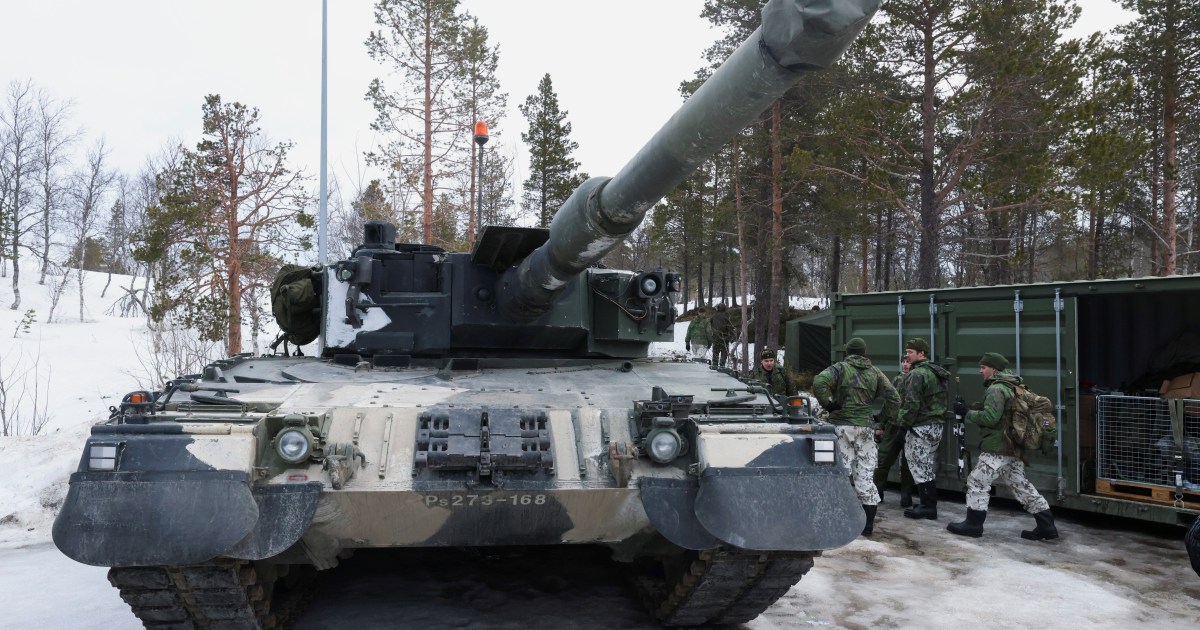The Russian attack on Ukraine brought back fears among many Finns of a repeat of the Soviet invasion of their country in 1939, a fear enough to dismantle Finland's seven-decade strategy of non-alignment, and prompt it to apply to join the North Atlantic Treaty Organization (NATO).
This was mentioned by Wall Street Journal reporter Son Engel Rasmussen in
a report
in the newspaper, saying that "When the Russian President (Vladimir Putin) invaded Ukraine, he sought to divide and weaken NATO, but his strategy backfired in Finland." More than anywhere else."
Rasmussen explains that if the Scandinavian country joins NATO - along with Sweden in the coming weeks, as expected - Putin will find himself in front of two new NATO military members next to him, and his country's borders with NATO will increase with the stroke of a pen, equal to 830 miles.
The unpredictability of Russia's behavior
The reporter quoted some Finnish officials’ talk about their country’s concerns after the Russian forces invaded Ukrainian territory;
"We are more than ever able to predict Russia's behavior," said the Director-General of Political Affairs of the Finnish Ministry of Foreign Affairs and former ambassador to NATO Beretta Asunma, and indicated that she was concerned about the loose talk from Russia about the use of weapons of mass destruction.
Rasmussen explained that Finland remained outside NATO after its formation in 1949 to avoid provoking Russia, and also hosted the 1973 Conference on Security and Cooperation in Europe, which led to the Helsinki Accords.
It is a diplomatic treaty between European countries, the United States and Canada aimed at reducing tensions between the former Soviet Union and the West.
He said that Finland had no doubts that rapprochement with NATO would bring security guarantees.
Since the mid-1990s, Finland has ensured that its military is interoperable with NATO, which means that its forces can conduct operations alongside allied forces, and has purchased and produced equipment that can work alongside those of allied members.
The first out of neutrality
Finland began its first major exit from neutrality in 1995, joined the European Union alongside Sweden, and has remained militarily nonaligned, but has become closer to NATO and has contributed to missions in Bosnia, Kosovo and Afghanistan.
Russia's invasions of Georgia in 2008 and Crimea in 2014 reinforced Finnish security officials' determination not to be complacent, but that did not alter its stay outside NATO.
But after the Russian invasion of Ukraine, Finns' support for NATO membership jumped to 53% in late February, from about 20%, and to 76% on May 9.
Putin should be thanked
The reporter quoted the former Finnish Prime Minister and Foreign Minister Alexander Estab as saying that people like him who have always been in favor of NATO membership should thank Putin, but this is a bit shocking, because the cost of joining NATO is high if the cause is the war in Ukraine.
Rasmussen said Finland violated a decades-old policy of not shipping weapons to war zones when it decided to send anti-tank weapons, assault rifles and food parcels to Ukraine.
He added that with Finland's mood swing behind NATO membership, the country was subjected to Russian cyber attacks, and Russian planes violated Finnish airspace in early April during a speech by Ukrainian President Volodymyr Zelensky before the Finnish Parliament, and again in early May during a military exercise In the country, the United States and other NATO countries participated.

